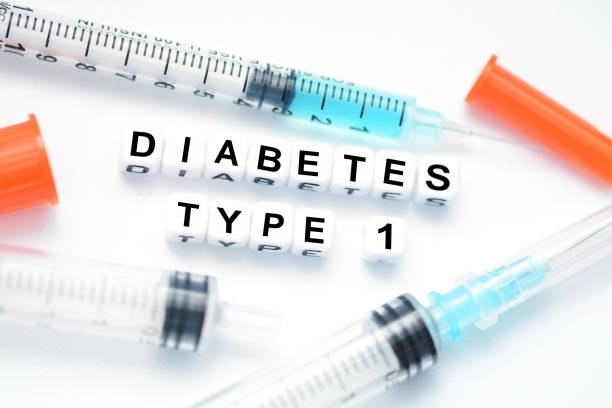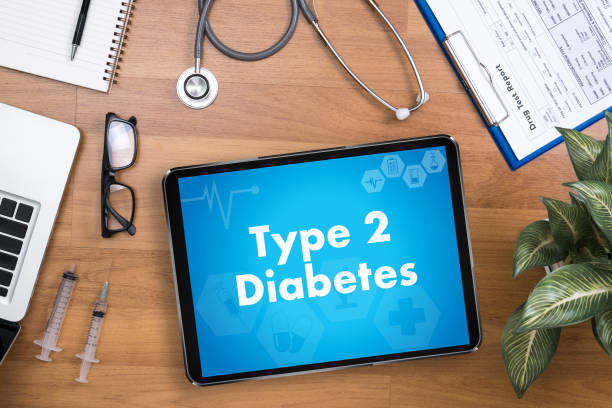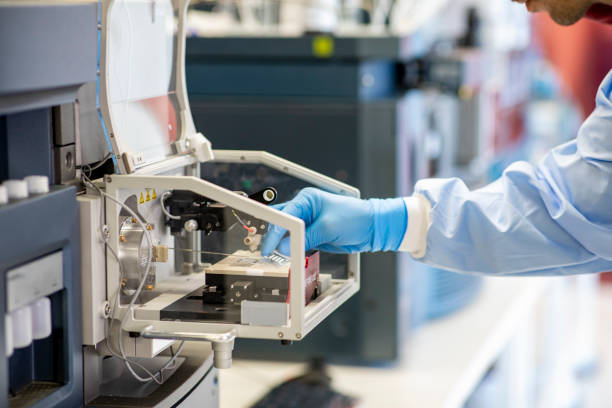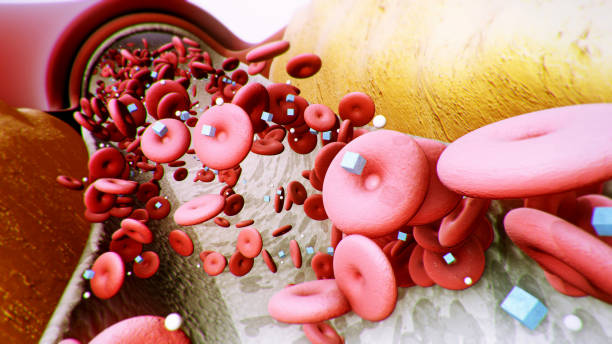Living with diabetes can feel overwhelming, but learning the science behind it gives you the power to take control. Both Type 1 and Type 2 diabetes affect how your body handles blood sugar, yet they are two very different conditions with unique causes and treatments. Type 1 is an autoimmune disease, while Type 2 is linked to insulin resistance and lifestyle factors. By understanding these differences, you can recognize symptoms early, explore treatment options, and make choices that support long-term health.
In this article, we break down the science behind Type 1 vs. Type 2 diabetes, covering their causes, warning signs, treatments, and prevention strategies to help you stay informed and proactive.
What Is Diabetes?
It is a chronic condition that changes the way your body turns food into energy. Under normal conditions, your digestive system breaks down most of the food you eat into sugar, also known as glucose. Your pancreas then produces insulin, a key hormone that acts like a “door opener,” allowing glucose to move from your bloodstream into your cells, where it is used for energy.
With diabetes, this process does not work the way it should. Either your body does not make enough insulin, or your cells do not respond to it properly. As a result, glucose builds up in your blood instead of being used by your cells. This leads to high blood sugar levels, also called hyperglycemia. If left uncontrolled, high blood sugar can damage vital organs and systems. Over time, it may cause serious health problems such as heart disease, kidney disease, nerve damage, and vision loss.
Type 1 Diabetes: The Autoimmune Disorder

What Causes Type 1 Diabetes?
Type 1 diabetes is an autoimmune condition, which means the body’s own defense system turns against itself. In this case, the immune system mistakenly attacks and destroys the insulin-producing beta cells in the pancreas. Without these cells, the body can no longer make the insulin needed to move glucose from the blood into the cells for energy. This leads to high blood sugar levels that must be managed daily with insulin therapy.
The exact cause of Type 1 diabetes is still not fully understood. Experts believe a mix of genetic factors and environmental triggers, such as viral infections, may set off the immune attack. Unlike Type 2 diabetes, lifestyle choices like diet, weight, or physical activity are not linked to the development of Type 1. This is why people of any body type or lifestyle can be diagnosed with Type 1 diabetes, often during childhood or adolescence, though it can occur in adults as well.
Symptoms of Type 1 Diabetes
Symptoms of Type 1 diabetes usually appear suddenly and may progress within a few weeks. Because the body is no longer making enough insulin, blood sugar levels rise quickly. Common warning signs include:
- Frequent urination – the kidneys work harder to remove extra sugar from the blood.
- Excessive thirst – constant fluid loss makes you feel very thirsty.
- Unexplained weight loss – the body starts burning fat and muscle for energy since glucose cannot enter the cells.
- Fatigue – without glucose in the cells, the body runs low on energy.
- Blurred vision – high blood sugar can affect the eye’s lens, leading to temporary vision changes.
Recognizing these symptoms early is important, as untreated Type 1 diabetes can lead to dangerous complications like diabetic ketoacidosis.
Treatment for Type 1 Diabetes
Since the body cannot produce insulin on its own, people with Type 1 diabetes must take insulin every day to survive. Treatment is focused on keeping blood sugar within a healthy range. This usually includes:
- Monitoring blood sugar levels several times a day using glucose meters or continuous glucose monitors.
- Following a healthy diet that balances carbohydrates, proteins, and fats to avoid large blood sugar spikes.
- Regular exercise, which helps the body use glucose more effectively and supports overall health.
- Using insulin pumps or injections to deliver insulin throughout the day in a way that mimics the body’s natural process.
With proper care and support, people with Type 1 diabetes can lead full, active, and healthy lives.
Learn more from the American Diabetes Association.
Type 2 Diabetes: Insulin Resistance

What Causes Type 2 Diabetes?
Type 2 diabetes happens when the body does not use insulin the way it should. This problem is called insulin resistance. When cells in the muscles, fat, and liver stop responding to insulin, glucose cannot enter the cells easily. To make up for this, the pancreas works harder and produces extra insulin to keep blood sugar under control. At first, this may help, but over time the pancreas becomes tired and cannot keep up with the demand. As a result, blood sugar levels rise, leading to long-term health risks if not managed.
Risk factors include:
- Being overweight or obese
- Lack of physical activity
- Family history of diabetes
- Age (risk increases after 45)
- High blood pressure or cholesterol
Symptoms of Type 2 Diabetes
Symptoms of Type 2 diabetes often develop slowly over time, which makes them harder to notice at first. Some people may not realize they have the condition until blood sugar levels are very high. Common warning signs include:
- Increased hunger and thirst – the body struggles to use glucose for energy, leaving you feeling hungry and dehydrated.
- Frequent urination – high blood sugar makes the kidneys work harder, causing more trips to the bathroom.
- Fatigue – when cells do not get enough glucose, you may feel tired even after rest.
- Blurred vision – excess sugar in the blood can pull fluid from the lenses of your eyes, affecting vision.
- Slow-healing wounds – high blood sugar weakens the immune system and reduces circulation, making cuts or infections take longer to heal.
Recognizing these early signs is important because untreated Type 2 diabetes can lead to long-term complications such as nerve damage, kidney problems, and heart disease.
Treatment for Type 2 Diabetes
Treatment for Type 2 diabetes focuses on helping the body use insulin more effectively and keeping blood sugar within a healthy range. This can include:
- Lifestyle changes such as following a balanced diet, losing excess weight, and getting regular exercise to improve insulin sensitivity.
- Oral medications like metformin, which help lower blood sugar and improve how the body responds to insulin.
- Insulin injections (in advanced cases) when other treatments are not enough to control blood sugar.
With early diagnosis and consistent management, many people with Type 2 diabetes can live long, healthy, and active lives.
For more, see National Institute of Diabetes and Digestive and Kidney Diseases (NIDDK).
Key Differences Between Type 1 and Type 2 Diabetes
| Feature | Type 1 | Type 2 |
|---|---|---|
| Cause | Autoimmune destruction of beta cells | Insulin resistance and reduced insulin production |
| Onset | Usually in childhood or adolescence | Usually in adulthood, but rising in youth |
| Insulin Production | None or very little | Reduced or ineffective |
| Treatment | Insulin therapy required | Lifestyle changes, medications, sometimes insulin |
| Prevention | Not preventable | Often preventable with lifestyle changes |
Can Type 1 and Type 2 Diabetes Be Prevented?
- Type 1 Diabetes: Currently, there is no way to prevent it. Research is ongoing to find potential vaccines or immune therapies.
- Type 2 Diabetes: Prevention is possible through lifestyle choices. Regular physical activity, healthy eating, weight management, and routine checkups play a big role in lowering risk.
For prevention tips, check out the World Health Organization (WHO).
Complications of Uncontrolled Diabetes
Without proper management, both Type 1 and Type 2 diabetes can lead to serious health issues, including:
- Heart disease
- Stroke
- Nerve damage (neuropathy)
- Kidney disease
- Vision problems (diabetic retinopathy)
- Foot problems and infections
The Role of Diet and Exercise in Diabetes Management
No matter the type, healthy habits play a big role in managing it and protecting long-term health. Making small, consistent changes can help keep blood sugar levels stable and lower the risk of complications. Some tips include:
- Eating balanced meals rich in whole grains, lean proteins, and colorful vegetables. These foods provide steady energy and prevent blood sugar spikes.
- Reducing sugary drinks and processed foods, since they can raise blood sugar quickly and add empty calories. Choose water, herbal tea, or sparkling water instead.
- Exercising at least 150 minutes per week, such as brisk walking, cycling, or swimming. Regular activity helps improve insulin sensitivity and supports weight management.
- Managing stress and getting enough sleep, because high stress and poor sleep can raise blood sugar and make it harder to control cravings and energy levels.
Together, these lifestyle habits support better blood sugar control and improve overall well-being.

Latest Research on Diabetes
Scientists are making steady progress in understanding both Type 1 and Type 2 diabetes. Research is focused not only on how these conditions develop but also on new ways to manage and treat them. Promising areas include stem cell therapy, which aims to replace damaged insulin-producing cells, and artificial pancreas systems that combine continuous glucose monitors with insulin pumps to mimic the body’s natural insulin response.
In addition, advanced medications are being developed to improve insulin sensitivity, protect beta cells, and reduce complications. These breakthroughs give real hope for better blood sugar control, easier daily management, and the possibility of long-term cures in the future. Clinical trials and ongoing studies continue to bring us closer to changing the way it is treated worldwide.
Stay updated with National Institutes of Health (NIH).
Conclusion: Understanding Type 1 vs. Type 2 Diabetes
Knowing the science behind Type 1 vs. Type 2 diabetes helps you take charge of your health and make informed decisions. Type 1 diabetes requires lifelong insulin therapy because the body cannot make its own insulin. Careful monitoring of blood sugar, balanced meals, and regular activity are also important for daily management.
Type 2 diabetes, on the other hand, can often be managed—and in some cases prevented—through healthy lifestyle changes such as diet, exercise, and weight control. Still, both conditions need regular checkups, consistent care, and a proactive approach. Early action and good management not only improve quality of life but also help prevent serious complications in the future.
If you or someone you love is living with it, take action today. Stay informed, follow your treatment plan, and build healthy habits. Share your thoughts or experiences in the comments—your story could inspire someone else on their journey to better health.

